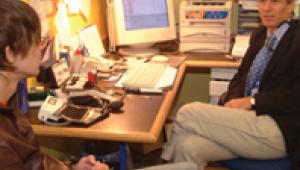An analysis by the health think-tank looked at the additional pressures facing the NHS in winter.
It found that over 95% of beds across English hospitals were occupied every day during the 2015-16 winter, and the equivalent of more than five extra hospitals’ worth of beds had to be brought into service to cope with surges in demand. On the single busiest day last winter, an extra 4,390 beds had to be opened, equivalent to seven extra hospitals.
Given that the pressures on the health service have not lessened over the past year, the trust expects the NHS to face similarly high occupancy rates this winter.
A shortfall in social care financing is thought to be delaying patient discharge across the health service.
The Nuffield Trust said that high bed occupancy levels are a “real problem” for both patients and staff in the NHS, as when occupancy rates rise, it gets increasingly difficult to find beds for emergency patients who need to be admitted from A&E.
This can hinder a hospital’s ability to meet the standard for 95% of patients attending A&E to be treated within four hours.
Also, high occupancy rates can lead to problems maintaining cleanliness and infection control, and lead to disruption for patients who are moved around to find free beds. Patients are often shunted to inappropriate wards, such as placing elderly patients on obstetrics wards, due to a lack of available beds. A recent report by the Health Foundation and the Advancing Quality Alliance highlighted the cost of poor patient ‘flow’ around the NHS.
High occupancy rates can also be dangerous in the event of a major health event, or the outbreak of flu or norovirus, in which case the number of people affected can rise rapidly.
The report zooms in on the experience of trusts within the busiest winter week, which fell at the end of January 2016. On Monday 25 January, one in seven trusts reported that all their acute beds were full, and almost four out of ten had occupancy rates of over 98%. This was after trusts had already opened an extra 4,200 beds that day.
Through the week, nine trusts were all full every day with 100% of their acute beds occupied, including extra beds brought in temporarily. The following Monday, 1 February, almost three-quarters (72%) of all trusts recorded bed occupancy levels exceeding 95%.
Across the whole of last winter, around 95% of nearly 100,000 available beds in England were occupied, including extra ‘escalation’ beds brought into service.
John Appleby, chief economist at the Nuffield Trust, said: “With such high levels of bed occupancy linked to higher infection rates and longer waits in A&E, these pressures pose a real threat to the smooth running of hospitals and, ultimately, to patient safety.”
Appleby warned that the NHS would be going into the winter in a worse position than it was a year ago, “with record deficits, worse performance against the A&E target, far more trolley waits, record delayed discharges from hospital, and fewer people getting the help they need with social care.
“When you add into that mix the sort of intense pressure on beds we’ve demonstrated hospitals experienced last winter, patients’ care is bound to suffer,” he concluded.



















